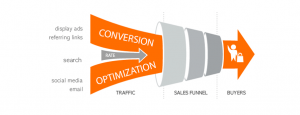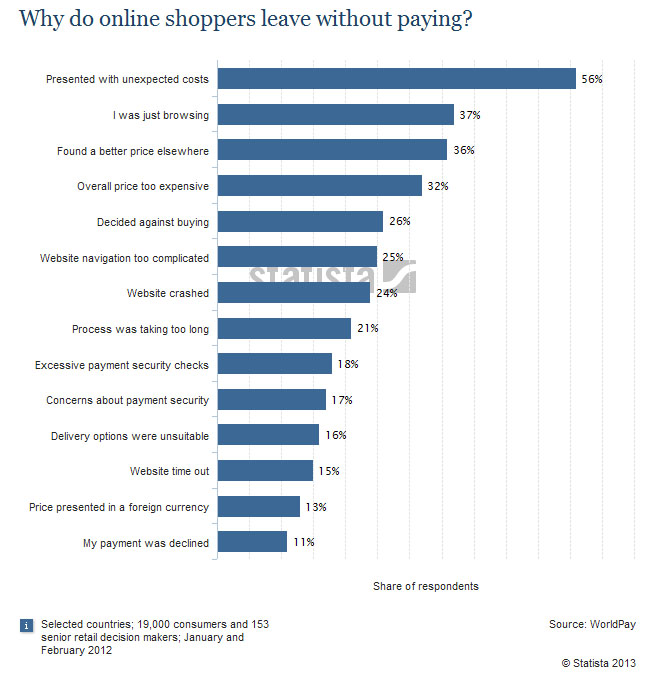What is conversion rate?
Conversion rate ( CR ) is defined as the number of people who come to your e-commerce website and “convert” by taking whatever desired action you  want for them to take. This could be folks who came to your site and signed up for your email newsletter, downloaded a piece of content or even those who came and ended up buying from your store. Whatever is it you’d like for your visitors to do, this is what you want to measure.
want for them to take. This could be folks who came to your site and signed up for your email newsletter, downloaded a piece of content or even those who came and ended up buying from your store. Whatever is it you’d like for your visitors to do, this is what you want to measure.
Within this post, we’re going to focus on turning shoppers into buyers once they arrive to your store.
Why is conversion rate so important?
Your store’s conversion rate is important for the mere reason that it is the metric by which you measure your business profitability. You can use the conversion rate to predict future success or use it to determine that something isn’t working. Then, you can use the conversion rate as a measuring stick as you attempt to fix the customer experience on your website.
What effects to the conversion rate ?

From WPP:
We learned how global markets compare when it comes to the number of shoppers making decisions in store. In some cases, results were not far off the much quoted 70% figure, but in other cases findings were very different. Shopper behaviour varies depending on shopper profile, the category they are in, the channel they are shopping, the product they are buying, and where they are in the world.
NORTH AMERICA – 72%
In North America, on average, 72% of shoppers make at least one decision in-store. However that can vary widely by market, with Dallas shoppers at 39% v those in Boston, where 90% make at least one purchase decision while they are shopping.
Display drives category
The effect of displays was clearly apparent. One word of caution though. Brilliant in-store displays can certainly benefit a particular brand, but the bigger benefit can sometimes go to the retailer. Sales in a category with displays often will rise, even though sales of the brand on display may not necessarily enjoy the same percentage of sales increase.
Price drives Volume
Especially in tough economic times, shoppers can seldom resist stocking up on quality brands that slash the price to sustain volume sales. But every marketer knows that price discounting simply undermines the equity that is so costly to build in the first place Cutting price is no way to remain competitive over the long term.
Engagement drives brand sales
Brands that actually engage shoppers, experientially or emotionally, tend to turn shoppers into buyers. Engagement can take many forms, from creating a powerful brand experience with shoppers outside the store, having brand ambassadors interacting with them in-store, to demos and sampling, to cause related brand associations (sustainability is a favorite these days) that resonate with shoppers when its time to buy.